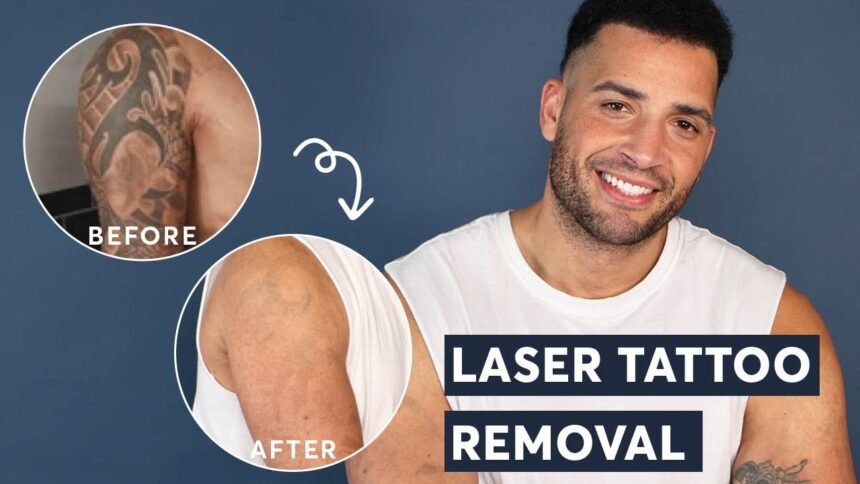Understanding Tattoo Removal
Tattoos have been a form of self-expression for centuries, but sometimes, the ink that once symbolized a meaningful memory or artistic choice may no longer feel relevant. Whether it’s due to a change in personal preferences, professional requirements, or the desire for a fresh start, tattoo removal has become a popular option for many. This article will delve into what you need to know about full tattoo removal, including the methods available, the process involved, and the factors that can influence the outcome.
Methods of Tattoo Removal
One of the most common methods for tattoo removal is laser treatment. This technique utilizes high-intensity light beams to break down the ink particles in the tattoo, allowing the body’s immune system to gradually remove them. Laser removal is widely considered the gold standard due to its effectiveness and minimal risk of scarring.
Another method, albeit less popular today, is dermabrasion. This involves sanding down the skin to remove the layers containing the tattoo ink. While it can be effective, it is generally more painful and can lead to scarring.
Surgical excision is a third option, where the tattoo is cut out of the skin, and the remaining skin is stitched back together. This method is typically reserved for smaller tattoos due to its invasive nature and the potential for scarring.
The Tattoo Removal Process
The process of tattoo removal is not instantaneous; it requires multiple sessions over several weeks or even months. The number of sessions needed depends on several factors, including the size and color of the tattoo, the depth of the ink, and the individual’s skin type.
During each laser session, the laser emits pulses of light that penetrate the skin and target the tattoo ink. Different wavelengths of light are used to treat different colors of ink effectively. Black ink is the easiest to remove because it absorbs all laser wavelengths. In contrast, colors like green and blue are more challenging and may require more sessions.
Factors Affecting Tattoo Removal
Several factors can influence the effectiveness and duration of the tattoo removal process. One of the primary factors is the age of the tattoo. Older tattoos tend to fade more easily with laser treatment compared to newer ones. This is because the body has already started to break down the ink over time.
The location of the tattoo on the body also plays a significant role. Tattoos on areas with higher blood circulation, such as the chest or arms, tend to respond better to treatment than those on the lower legs or feet.
Skin type is another important consideration. Individuals with lighter skin tones generally experience faster results, as the laser can target the ink more effectively without the risk of affecting the surrounding skin pigment. However, advancements in laser technology have made it possible to safely and effectively treat a broader range of skin types.
Potential Side Effects and Risks
While laser tattoo removal is generally safe, it is not without potential side effects. Common side effects include redness, swelling, and blistering immediately following treatment. These symptoms usually subside within a few days. Less common side effects include changes in skin pigmentation, either hypopigmentation (lightening of the skin) or hyperpigmentation (darkening of the skin). Scarring is rare but can occur, especially if proper aftercare instructions are not followed.
It’s important to choose a qualified professional for tattoo removal to minimize risks. In places like Melbourne, tattoo removal services are widely available, but ensuring the practitioner is certified and experienced is crucial for a successful outcome.
Aftercare for Tattoo Removal
Proper aftercare is essential to ensure the skin heals well and to minimize the risk of complications. Following a laser session, it is crucial to keep the treated area clean and protected. Applying an antibiotic ointment can help prevent infection, while wearing sunscreen can protect the skin from UV damage, which is especially important as the skin is more sensitive post-treatment.
It’s also advisable to avoid picking at any scabs or blisters that form, as this can lead to scarring. Staying hydrated and maintaining a healthy lifestyle can aid in the body’s natural healing process and improve the overall results of the tattoo removal.
Conclusion
Tattoo removal is a viable option for those looking to erase unwanted ink. With advancements in laser technology, the process is more effective and accessible than ever before. However, it’s important to have realistic expectations and to understand that complete removal can take time and may not always result in perfectly clear skin.
For those considering this path, consulting with a qualified professional is the first step. They can provide a personalized treatment plan and guide you through the process to achieve the best possible results. Whether you’re in Melbourne or elsewhere, tattoo removal can offer a fresh canvas and the opportunity for new beginnings.








